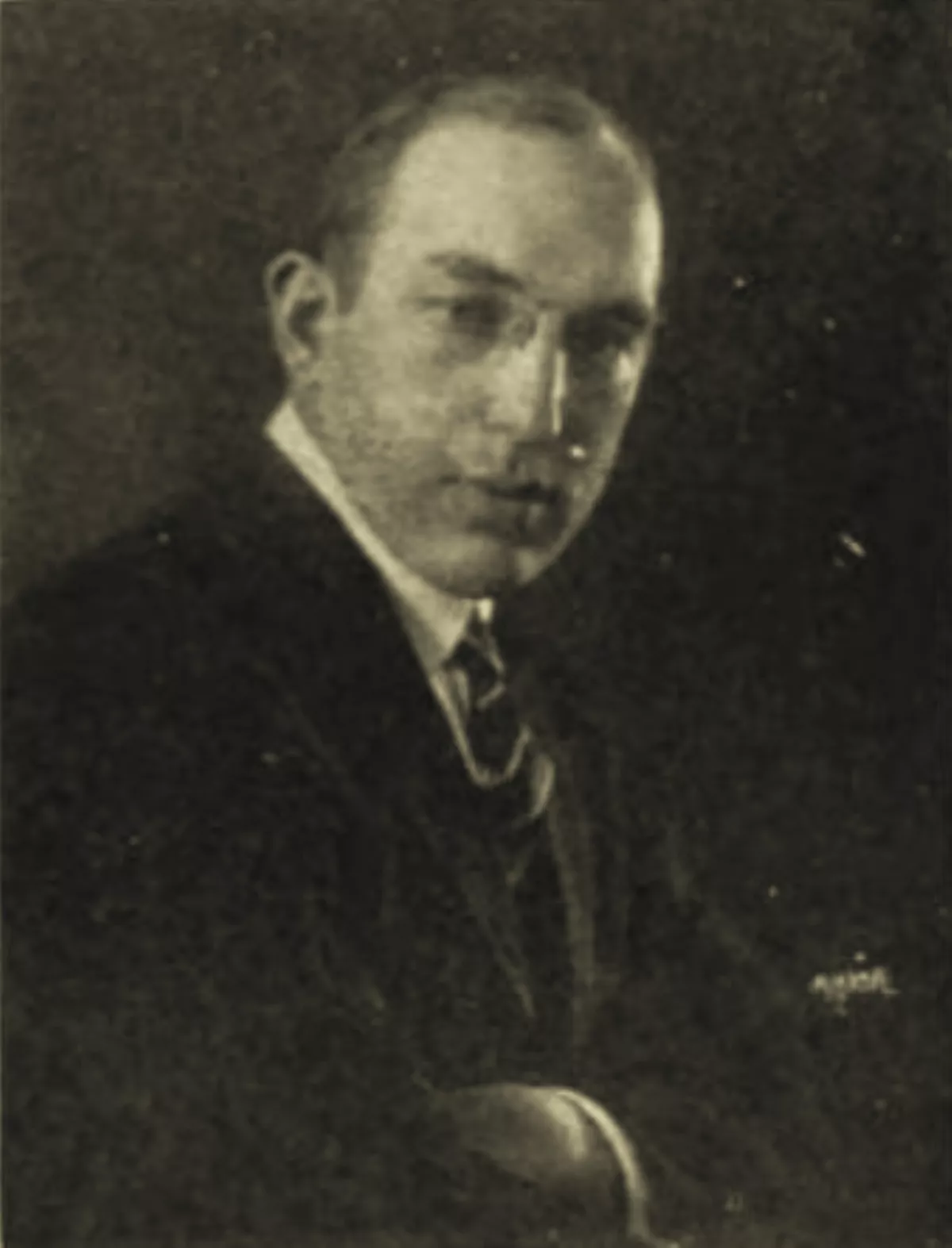 1.
1. Sigmund Gottfried Spaeth was an American musicologist who sought to de-mystify classical music for the general public.

 1.
1. Sigmund Gottfried Spaeth was an American musicologist who sought to de-mystify classical music for the general public.
Sigmund Spaeth promoted his ideas about music and music appreciation with vaudeville appearances, books and magazine articles, lectures, and radio and television programs.
Sigmund Spaeth's father had studied music with Friedrich Silcher at the University of Tubingen; he played the clarinet, piano and organ.
Sigmund Spaeth attended Quaker schools and graduated from Germantown Academy in 1901, aged sixteen.
Sigmund Spaeth studied violin with Emil Schmidt at the Philadelphia Music Academy.
Sigmund Spaeth matriculated at Haverford College, where he played soccer and cricket and participated in literary and musical activities.
Sigmund Spaeth taught German at Princeton University for two years before enrolling in its doctoral program.
From 1910 to 1912, Sigmund Spaeth taught English, coached football, soccer and swimming, and served as director of music at the Asheville School for Boys in North Carolina.
In 1913, Spaeth moved to New York City and took a part-time editorial position with music publisher G Schirmer, Inc.
Sigmund Spaeth went on to cover music for the New York Evening Mail and the Boston Evening Transcript and sports for the New York Times.
Sigmund Spaeth reviewed orchestral and chamber music concerts for the short-lived Opera Magazine.
Sigmund Spaeth wrote a weekly column and served as music editor for Life, which was then a humor magazine.
Sigmund Spaeth was editor-in-chief of Music Journal for ten years.
Sigmund Spaeth was vehemently critical of rock and roll.
In 1920, Sigmund Spaeth became educational director and later promotion manager for the American Piano Company, maker of the "Ampico", a pneumatic reproducing piano.
Sigmund Spaeth's duties included demonstrating the instrument at public recitals.
Sigmund Spaeth first appeared on-air in 1921 at WJZ, introducing artists associated with the Ampico piano.
Sigmund Spaeth hosted the first program to teach piano by radio; the weekly series Keys to Happiness was broadcast in 1932 and generated four thousand letters per week.
Listeners could write in for a cardboard keyboard chart; Sigmund Spaeth claimed that 350,000 were sent out in one year.
For twenty-five years Sigmund Spaeth was a regular participant in the Metropolitan Opera's quiz, a feature presented at intermissions during live radio broadcasts.
Sigmund Spaeth is better-known as a lyricist and translator than as a composer.
Sigmund Spaeth's earliest published composition was probably the Haverford Class of 1905 song.
Sigmund Spaeth collaborated on several translation projects with Cecil Cowdrey, including a re-working of the English libretto for Wagner's Tristan und Isolde for the Metropolitan Opera and the libretto of The Polish Jew, a folk-opera by Karel Weis that received its American debut at the Met in 1921.
Sigmund Spaeth wrote lyrics for several songs by well-known composers, including "Chansonette" by Rudolf Friml and "My Little Nest of Heavenly Blue" by Franz Lehar.
Sigmund Spaeth composed a number of musical parodies; some were published in Words and Music:.
Sigmund Spaeth wrote an anthem, "Our New York," which New York Mayor Fiorello La Guardia designated the city's official song in June 1940.
Sigmund Spaeth was founder and president of Songmart, a non-profit clearing house organized to assist amateur composers.
Sigmund Spaeth testified in defense of Walt Disney, Sigmund Romberg, and the Victor Talking Machine Company, among others, often working with well-known copyright attorney Nathan Burkan.
Usually [Sigmund Spaeth] appeared for the defendant, since he believed that only rarely did a plaintiff have a just case.
Sigmund Spaeth contended that most similarities in tunes are accidental, and it is always possible to find identical melodic patterns in the public domain, unprotected by copyright.
Sigmund Spaeth argued that circumstantial evidence had no place in a plagiarism action, and that actual imitation should be clearly proved.
In 1917, Sigmund Spaeth resigned from the Evening Mail to become the director of industrial music at the YMCA in Bayonne, New Jersey.
Sigmund Spaeth received recognition from the Army, the Red Cross and the Treasury Department for contributions to morale during the Second World War, which included collecting old phonograph records for scrap and using the proceeds to buy new ones for the servicemen's clubs.
Sigmund Spaeth was a member of the National Music Council, and served as president National Association of American Composers and Conductors for nine years.
Sigmund Spaeth was a founder and president of the Louis Braille Music Institute in New York and chairman of the National Committee for American Music.
Sigmund Spaeth served as the national music chairman of Kiwanis International.
In 1928 Sigmund Spaeth became the managing director of Community Concerts, a non-profit organization formed to improve access to high-quality music in local communities.
Sigmund Spaeth was appointed dean of the Wurlitzer School of Music in 1937.
Sigmund Spaeth married Katherine Lane, a music critic and writer, on January 30,1917, in Westport, Connecticut.
Sigmund Spaeth was a member of a number of social clubs, including The Lambs, the New York Friars Club, the Dutch Treat Club, the University Glee Club, the Bohemians, the Nassau Club, the Princeton Club, and the Bensonhurst Cricket Club.
Sigmund Spaeth summed up his belief that music should be enjoyed by everyone, whether or not they had any musical talent.
Sigmund Spaeth wrote many books focused primarily on music and music appreciation.
Sigmund Spaeth contributed to a book of cocktail recipes and drinking songs published while Prohibition was still in effect.